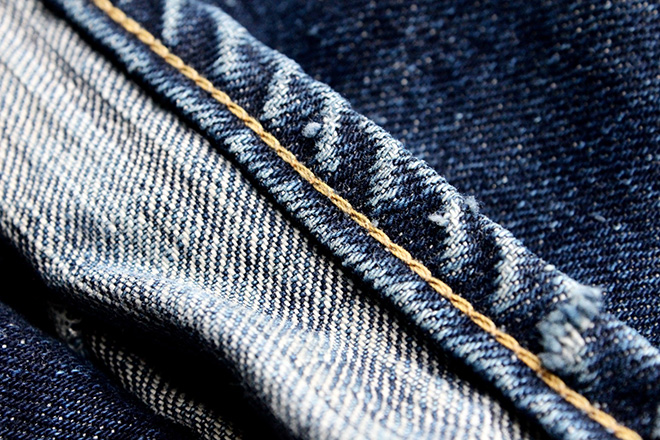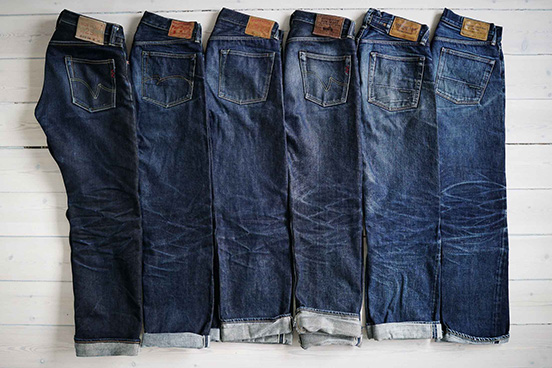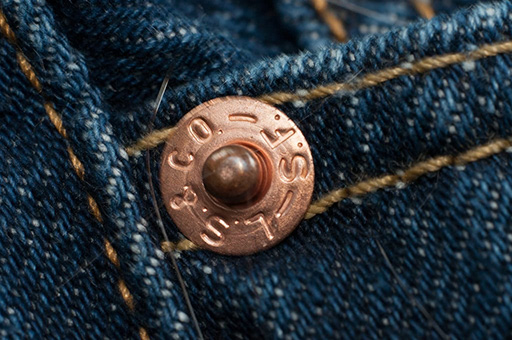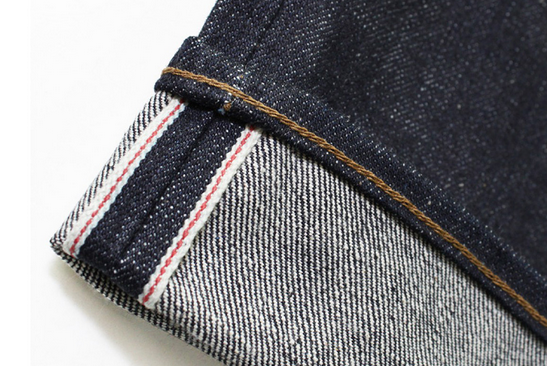There are so many denim terms that you may not know. On this occasion, we will explain some of the terms denim / jeans that you may often hear but don’t know what they mean.
1. Archuate
Its literal meaning is something that resembles an arch in the back pocket of jeans with double-stitching.
2. Broken Twill
Basically it is a combination of left hand twill and right hand twill. Made to prevent leg twisting that occurs naturally due to the knitting direction that leads to the right or left. Broken twill, zig zag direction
3. Chain Stitch
This is the most important sewing technique on jeans. In this sewing technique, it takes 2 pieces of thread that will interlock with each other and make a pattern like a chain.
This sewing technique is one of the sewing techniques that will guarantee more strength than ordinary stitches.
Apart from its strength, this type of stitch will also provide a roping effect on the hem. One sewing machine that has been used since ancient times and is famous for its chainstitch ability is the Union Special. Examples of chainstitch in hem
4. Distress/Washed/Pre-washed
The process for making jeans have a pre-worn effect. It can be in the form of small holes, torn, or at least the color of light stripes and the effect of ‘denim bleed’.
5. Downsizing
Downsizing jeans are mostly caused by the company that makes jeans in vanity sizes (not true waists). There is no specific rule for downsizing because everyone has a different body shape. If you want to downsize, it is advisable to first know what your true waist size is because sometimes the size of jeans in other brands cannot be used as a benchmark.
Downsize itself is also done by people to get a slimmer or more skinny fit. The amount of stretch must also be considered in downsizing.
Some examples of jeans that are downsized a lot or have a vanity size:
(Keep in mind that below are downsizing that is mostly done because downsizing is not the same for everyone and below is downsizing for RAW/Unwashed SANFORIZED jeans)
- Dior Homme: the original size is 2 sizes larger than the tag. For example, dior raw 19cm tag size 29 has the original size 31.
- APC: Same as dior homme, 2 sizes bigger than tag.
- Nudie: Most people are sizedown 1 or 2 in nudie. For example, for Thin Finn, many people want to get a skinny fit by dropping 2 sizes from their actual waist size.
The most important thing in downsizing is knowing our original waist size (actual waist size) and the size of the jeans, always looking for the size chart so we know what size we should go down.
Because taking the example above, many people downsize more than 2 sizes and can still get a good fit.
5. Hem
The part where 2 pieces of material become one. There is another term hemmed, usually used when we want to cut our jeans to the desired length. For example: “Wow, how good are my jeans on the hem to what extent? 32/31?”
6. Honeycomb / Whiskers
The effect is obtained when the tough denim material is folded in certain areas such as the back of the knee and the upper thigh. These folds will form like a pattern.
7. One-Wash
A term generally used for unsanforized jeans that have been soaked once in water (see also: soaked) to remove shrinkage.
8. Raw Denim / Dry Denim
Raw/Dry denim is a denim material that has not received post-treatment, in this case, denim that has just been made, is immediately sold. The thing that can be seen to distinguish “raw” materials from those that are not is that raw materials tend to be hard and darker in color. Usually every jeans vendor will provide more information about whether or not their product is raw.
The unique thing about raw/dry denim is that the dye color fades with the frequency of use. And this natural fading effect is what attracts the denim afficiando.
Unlike prewashed denim where the fading effect has been created artificially with machines and chemicals, raw denim will form a fading effect according to the body shape and activity of the wearer.
To facilitate this process, usually raw denim is rarely washed (usually after 6 months of effective use it is washed).
9. Rivets
A small round object that is placed in an area such as the edge of the bag, as an added strength (so that it doesn’t come off quickly). Usually made of copper.
Levis first introduced Hidden Rivets in the back pocket, because previously the rivets in the back pocket were considered a nuisance because they damage the sofa that is usually occupied and also the saddle when riding.
10. Sanforisation
The patented process aims to shrink the denim material before it is made into jeans.
11. Selvedge/Selvage
The term used for denim that forms its own edge (self-edge), because on a shuttle loom, denim knitting can be finished by the loom itself, unlike denim produced with a projectile loom, it must be cut and sewn to complete the fabric.
Generally, shuttle looms require more materials to finish the fabric, so that the composition of cotton used is more, making selvage denim material superior to ordinary denim.
12. Soak
As the name suggests, activities for soaking jeans. Usually done in a bathtub or bucket. This activity is done to shrink denim or just wash denim. In theory, the hotter the water is, the more the denim will shrink.
13. Starch
Usually used to make jeans tougher and stiffer. The harder and stiffer it is, it seems the easier it is to create a more contrasting crease and honeycombs.
14. Shrinking Denim
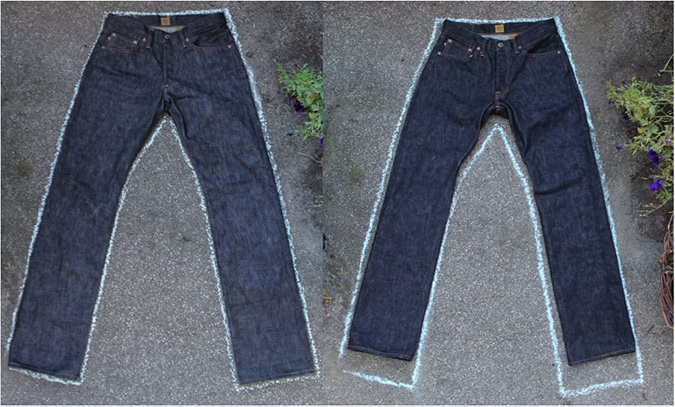
Why do we need to shrink denim? Because the basic material of jeans is generally made of cotton like other clothing materials in general. Cotton soaked in water of course will shrink and will expand again when stretched.
Through the process of sanforisation, the shrinkage of these jeans is minimized to about 1%. Therefore, for jeans that have been sanforized, generally shrinkage is no longer needed.
However, jeans that have not been sanforized (known as: unsaforized denim) shrinkage can still occur, causing a significant change in the size of the jeans.
Therefore, jeans that have not been sanforized are generally soaked before use. Estimates of shrinkage cannot be made because each jeans shrink differently depending on the material, temperature, length of time in the water and other factors. We recommend reading the label or asking a local expert before buying this type of jeans to get the ‘fit’ you want.
15. Stone Washed Jeans

First introduced stone washed jeans to the United States in 1982, by using a type of chemical that can physically change the color of the jeans material create a used effect on jeans. Garment refinement system that is applied to indigo denim, jeans, or other heavy fabrics by working with a mineral substance, namely pumice.
16. Acid Wash Jeans
In 1986, a chemical process known as “acid wash” was patented by the Italian Candida Laundry Company and promoted by the Rifle of Italy. Also known as marble, frosted or ice wash.
Well, this process is a chemical form of bleaching that spoils the color of the fibers and materials and causes fading and bleaching. Usually used for jeans material to create an uneven fading effect.
17. Discharge Finish
Dry refinement aims to damage the dye or fiber, which consists of:
- Sandblasting: Dry finishing by spraying high pressure sand to produce a contrasting and worn-looking abrasion effect.
- Scraping: handmade refinement aims to erode the indigo color on jeans.
- Grinding: The refinement aims to damage the fiber to make it look worn.

